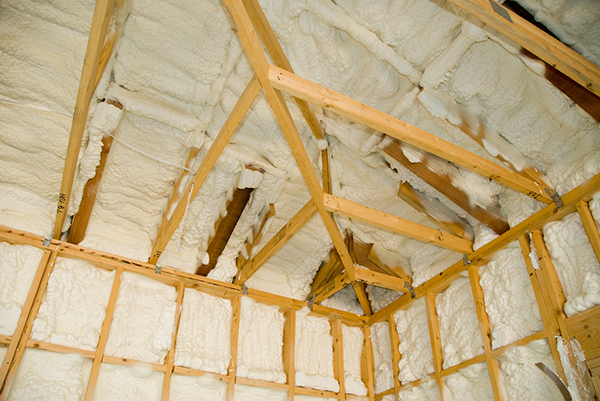Hot Roof Insulation
Author: Dan Stout | August 7, 2023
In most U.S. homes, the attic is an unconditioned space ventilated by air drawn in from outside and released through roof or ridge vents. But if insulation is applied directly to the roof deck, the result is an entirely unvented space with no air movement, commonly referred to as a "hot roof."

We'll take a quick look at the most common varieties of hot roof insulation, why some homeowners like them and what all this means for roofers.
Homeowner Benefits
Many homeowners find hot roofs appealing because they make attics more usable. Once the attic can be kept at the same temperature as the rest of the home, it can potentially be finished for living space or opened up to create a vaulted ceiling.
Hot roofs are especially popular with homeowners who live in areas without prolonged cold weather or snowfall. They don't have to worry about ice dams, which are a common downside of hot roofs.
What Roofers Need to Know
Hot roofs are a little like a certain famous brand of ketchup and condiments: There may be 57 flavors, but chances are you've only encountered one or two. By far, the most common type of hot roof insulation is a closed-cell spray foam that's applied to the underside of the roof deck. As a roofer, it's unlikely that you'll be directly involved in the installation unless your services include insulation and drywall installation. More likely, a general contractor will handle the insulation, and you'll be doing a standard roof install.
That said, it's important that you know if a job is on a hot roof so that you can adjust your install accordingly. IRC 806.5 provides a more thorough rundown of unvented attics and roof assemblies.
As just one example, wood shakes and shingles require a quarter-inch of airspace above the underlayment on a hot roof. In addition, any vent openings should be pointed out to the homeowner or general contractor and dealt with accordingly. And be aware that shingles generally run slightly warmer on unvented roofs, so it's likely that they'll have a service life that's a few years shorter than normal.
Over-Roofing
While interior spray foam usually falls on a general contractor, another type of hot roof involves far more work for the roofing crew: an over-roof. While it may sound like an overlay (when a new layer of shingles is applied directly onto existing material), an over-roof involves installing a full-frame structure onto an existing roof. It's a bit like laying a metal roof over asphalt shingles, but instead of a simple furring strip system, the frame will stand out from the existing deck far enough to create an air gap. Fill that with rigid insulation, and you've got a hot roof.
Over-roof projects are sometimes used in older home remodels where beams and rafters are left exposed. This can give the interior a stylish, rustic look. They may also be installed to deal with particularly bad ice dams. In those instances, the air gap would be left open to create a "cold roof."
Cold Roofs
A cold roof has insulation very close to the roof deck but still leaves room for ventilation. One common design uses plywood channels in the rafter bays to allow cold air to circulate beneath the roof deck. Then, closed-cell spray foam is applied to the underside of the channel rather than the deck.
No matter what style of hot roof insulation you'll be working with, always talk through the project details and expectations with the homeowner or general contractor. Good communication is good customer service and even smarter business.